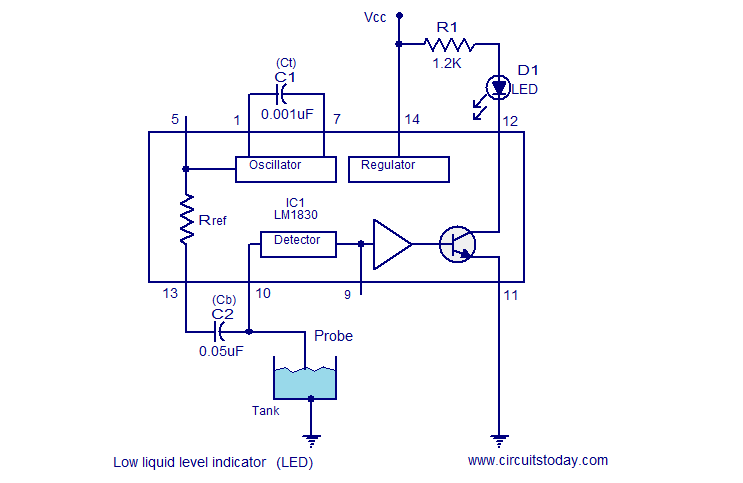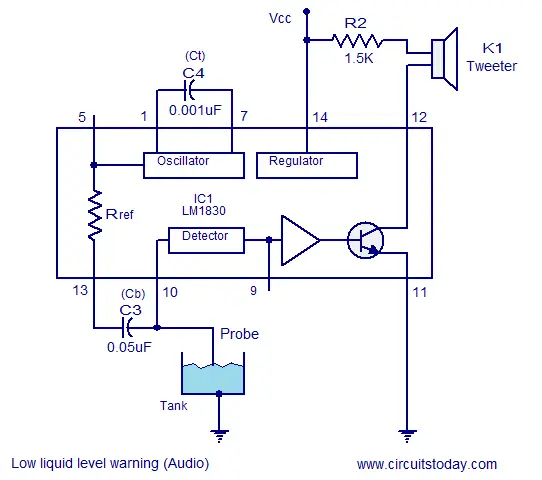EEE refers to Electrical and Electronics Engineering. Nowadays most of the students showing interest to join in this branch to complete their B.Tech successfully and to build good career in future. In EEE, they can learn different concepts on electronics and complete their project in final year. Many of them try to do creative and innovative projects. Some of them also try to do the projects which may be helpful in real life.

For their purpose, here we have listed few best projects ideas from various categories like embedded, electrical, robotics, DTMF, GSM, RF, RFID, etc. Most of these EEE projects ideas give a better idea in electronic circuits and their functionality. These ideas are collected from different sources for the convenience of EEE students. We hope these EEE projects ideas are very useful for engineering students in completing their B.Tech successfully.
So, you are always welcome to read the projects ideas given below and write your valuable opinions, comments, suggestions or any new projects ideas in the contact us page.
List of EEE Project Ideas:
| EEE Projects Ideas | |
|---|---|
| 1 | Auto Intensity Control of Street Lights |
| 2 | Automatic Irrigation System on Sensing Soil Moisture Content |
| 3 | Programmable Switching Control for Industrial Automation in Repetitive Nature of Work |
| 4 | Automatic Wireless Health Monitoring System in Hospitals for Patients |
| 5 | Precise Digital Temperature Control |
| 6 | Optimum Energy Management System |
| 7 | Security System Using Smartcard Technology |
| 8 | PC Based Electrical Load Control |
| 9 | Secret Code Enabled Secure Communication Using RF Technology |
| 10 | Density Based Traffic Signal System |
| 11 | Line Following Robotic Vehicle |
| 12 | TV Remote Operated Domestic Appliances Control |
| 13 | Password Based Circuit Breaker |
| 14 | Programmable Load Shedding Time Management for Utility Department |
| 15 | Object Detection by Ultrasonic Means |
| 16 | Street Light that Glows on Detecting Vehicle Movement |
| 17 | Tampered Energy Meter Information Conveyed to Concerned Authority by Wireless Communication |
| 18 | Distance Measurement by Ultrasonic Sensor |
| 19 | Portable Programmable Medication Reminder |
| 20 | Programmable Energy Meter for Electrical Load Survey |
| 21 | Security System With User Changeable Password |
| 22 | Networking of Multiple Microcontrollers |
| 23 | Solar Powered LED Street Light with Auto Intensity Control |
| 24 | SCADA (Supervisory Control & Data Acquisition) for Remote Industrial Plant |
| 25 | Parallel Telephone Lines with Security System |
| 26 | Using TV Remote as a Cordless Mouse for the Computer |
| 27 | Movement Sensed Automatic Door Opening System |
| 28 | Railway Level Crossing Gate Control through SMS by the Station Master or the Driver |
| 29 | GSM Based Monthly Energy Meter Billing via SMS |
| 30 | DTMF Based Load Control System |
| 31 | Synchronized Traffic Signals |
| 32 | Pick N Place with Soft Catching Gripper |
| 33 | Fire Fighting Robotic Vehicle |
| 34 | War Field Spying Robot with Night Vision Wireless Camera |
| 35 | Theft Intimation of the Vehicle Over SMS to Owner Who Can Stop the Engine Remotely |
| 36 | Closed Loop Control for a Brushless DC Motor to Run at the Exactly Entered Speed |
| 37 | Automatic Surveillance Camera Panning System from PC |
| 38 | Flash Flood Intimation Over GSM Network |
| 39 | RFID security access control system |
| 40 | Integrated Energy Management System Based on GSM Protocol with Acknowledgement Feature |
| 41 | Cell Phone Based DTMF Controlled Garage Door Opening System |
| 42 | Display of Dialed Telephone Numbers on Seven Segment Displays |
| 43 | Non Contact Tachometer |
| 44 | RFID based attendance system |
| 45 | Line Following Robotic Vehicle Using Microcontroller |
| 46 | Automatic Dialing to Any Telephone Using I2C Protocol on Detecting Burglary |
| 47 | Life Cycle Testing of Electrical Loads by Down Counter |
| 48 | GSM Based Energy Meter Reading with Load Control |
| 49 | BLDC Motor Speed Control with RPM Display |
| 50 | Predefined Speed Control of BLDC Motor |
| 51 | Stamp Value Calculator for Postage Needs |
| 52 | Dish Positioning Control by IR Remote |
| 53 | Hidden Active Cell Phone Detector |
| 54 | Long Range FM Transmitter with Audio Modulation |
| 55 | Railway Track Security System |
| 56 | Sun Tracking Solar Panel |
| 57 | Remote Jamming Device |
| 58 | Wireless Electronic Notice Board Using GSM |
| 59 | IR Obstacle Detection to Actuate Load |
| 60 | Automatic Dusk to Dawn (Evening on to Morning Off) |
| 61 | Rhythm Following Flashing Lights |
| 62 | Thermistor Based Temperature Control |
| 63 | Object Counter with 7 Segment Display |
| 64 | Incoming Phone Ring Light Flasher |
| 65 | Solar Power Charge Controller |
| 66 | Wire Loop Breaking Alarm Signal |
| 67 | Video Activated Relay to Control the Load |
| 68 | Touch Controlled Load Switch |
| 69 | Time Delay Based Relay Operated Load |
| 70 | Electronic Eye Controlled Security System |
| 71 | Fastest Finger Press Quiz Buzzer |
| 72 | Pre-programmed Digital Scrolling Message System |
| 73 | Speed Checker to Detect Rash Driving on Highways |
| 74 | Home Automation Using Digital Control |
| 75 | Four Quadrant DC Motor Speed Control with Microcontroller |
| 76 | Intelligent Overhead Tank Water Level Indicator |
| 77 | Speed Synchronization of Multiple Motors in Industries |
| 78 | Pre Stampede Monitoring and Alarm System |
| 79 | Unique Office Communication System Using RF |
| 80 | PC Controlled Scrolling Message Display for Notice Board |
| 81 | Touch Screen Based Industrial Load Switching |
| 82 | Touch Screen Based Home Automation System |
| 83 | Speed Checker to Detect Rash Driving on Highways |
| 84 | RF Based Home Automation System |
| 85 | Wireless message Communication Between Two Computers |
| 86 | Obstacle Avoidance Robotic Vehicle |
| 87 | Solar Powered Auto Irrigation System |
| 88 | Auto Metro Train to Shuttle Between Stations |
| 89 | Touch Screen Based Remote Controlled Robotic Vehicle for Stores Management |
| 90 | Metal Detector Robotic Vehicle |
| 91 | RFID Based Passport Details |
| 92 | Beacon Flasher Using Microcontroller |
| 93 | Discotheque Light Stroboscopic Flasher |
| 94 | IR Controlled Robotic Vehicle |
| 95 | Automatic Bell System for Institutions |
| 96 | Cell Phone Controlled Robotic Vehicle |
| 97 | RFID Based Device Control and Authentication Using PIC Microcontroller |
| 98 | Theft Intimation of Vehicle Over SMS to Owner Who Can Stop the Engine Remotely |
| 99 | Street Light that Glows on Detecting Vehicle Movement |
| 100 | Density Based Traffic Signal System Using PIC Microcontroller |
| 101 | Solar Energy Measurement System |





